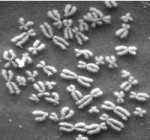I’m still plugging away at my genetics course, and will be until May — so get used to me plopping in these long academic tutorials 3 times a week. You can ignore them, my students can’t.
I’m trusting that the students now have solid foundation in basic Mendelian genetics, so now it’s time to start cutting the mooring ropes so we can drift off into more complex and difficult waters.





